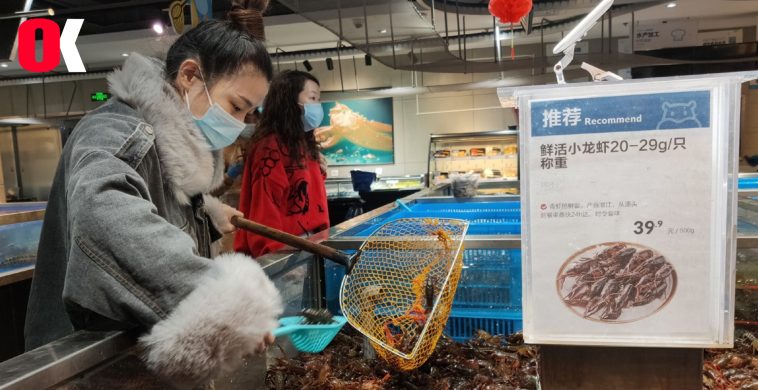Companies Use Artificial Intelligence To Profit From The Crayfish Boom
Meng Tao has long been engaged in the research and development of high-precision industrial artificial machine tools such as gearboxes in the leadership team of Kefeng Transmission Group in Huanggang, Hubei.
It wasn’t until three years ago that he began to pay attention to the development of crayfish processing machines. Because Chinese diners have a growing appetite for crustaceans.
The machine developed by Kofon Motion Group uses artificial intelligence to send the angle and position of the crayfish to the robot for automatic capture. It can remove about 1000 crayfish heads and retain the tails in one minute. The daily workload of the machine is equivalent to the workload of 40 to 50 workers.
Kofon said that its self-innovated intelligent processing machine in the final stage of testing and expected to launch the first such machine nationwide within a few months.
According to the Ministry of Agriculture and Rural Affairs, Hubei accounts for about half of the country’s crayfish supply.
According to business information provider Tianyancha. There are now nearly 4,000 crayfish processing enterprises in Hubei, accounting for 23.3% of the country’s total. Crayfish processing has become a local pillar industry.
“Online and supermarket crayfish mostly have shell tails, and sales are usually higher than whole crayfish. Chinese diners like to peel their shells when they eat. Just like eating nuts and seeds, this process makes it more interesting. Delicious,” said Meng, vice president of Kofon Motion Group.
However, many crayfish processors find it difficult to hire employees to manually remove the crayfish heads.
A processor in Hubei said it needs thousands of manual workers to process crayfish every year. Processors usually recruited from intermediary agencies in advance, and it is often difficult to recruit workers.
Most of these employees are women in their 50s, and each employee needs to handle about 120 kilograms of crayfish every day. According to Hubei Daily, their monthly salary is less than 10,000 yuan (US$1,560) per person.
“As crayfish mature in different time periods and regions, their sizes are also different. We rely on artificial intelligence machines that need to learn these different sizes to complete the work, and we are still fine-tuning them,” Meng said.
At present, the company has received a large number of inquiries from crayfish processors. But has not yet signed a formal purchase agreement with them. The company said it expects to achieve mass production of the machine within this year.
In the first two weeks of May, China Southern Airlines Cargo Branch transported nearly 100 tons of crayfish from Hubei and Hunan provinces to other provinces across the country, and the volume increased by more than 80% year-on-year.
Across the country, industry insiders have applied for more than 1,500 crayfish-related patents in China. Which about 100 are authorized invention patents. According to Qicha, a company that tracks business registrations, most of these invention patents are related to the cleaning, sorting and squashing of crayfish. “In the long run, processors can use automated machines to obtain higher profits. With the rapid industrialization of the crayfish industry, it is expected that the demand for automatic dehulling machines will continue to rise,” said Luo Xiang, an analyst at LeadLeo Research Institute. Market research provider.





GIPHY App Key not set. Please check settings